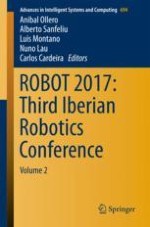These volumes of "Advances in Intelligent Systems and Computing" highlight papers presented at the "Third Iberian Robotics Conference (ROBOT 2017)". Held from 22 to 24 November 2017 in Seville, Spain, the conference is a part of a series of conferences co-organized by SEIDROB (Spanish Society for Research and Development in Robotics) and SPR (Portuguese Society for Robotics). The conference is focused on Robotics scientific and technological activities in the Iberian Peninsula, although open to research and delegates from other countries. Thus, it has more than 500 authors from 21 countries. The volumes present scientific advances but also robotic industrial applications, looking to promote new collaborations between industry and academia.
